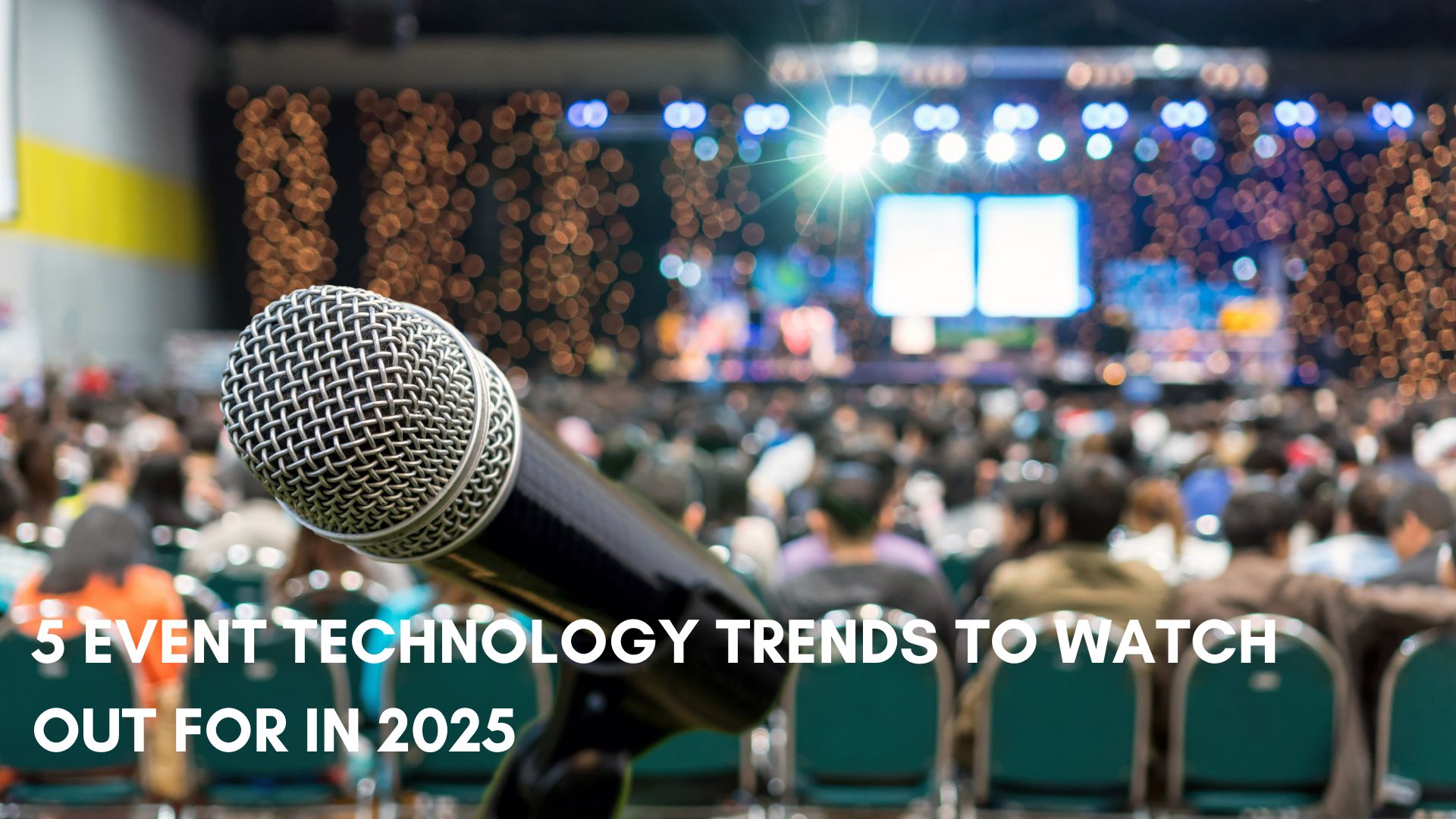
Introduction
The event landscape is constantly evolving, and technology is at the forefront of this transformation. In 2025, we can expect to see some exciting new trends that will revolutionize the way we plan, execute, and experience events. Here are five event technology trends that you can integrate into your event planning and design to chart greater success.
What do event technology solutions entail?
Event technology encapsulates the whole breadth of event conceptualization, design, execution and management that crystalizes into experiential marketing solutions or heightened brand experiences. From smart event registration software that organizes user data for valuable insights and automates communication to interactive display walls that can collect leads and help with post-event analysis, event technology solutions walk every step of the way.
5 event technology trends going big now
1. The rise of AI-powered everything: Be it AI Bots that can provide virtual assistance for event planning and smart venue access, or an AI Photobooth making waves with its fabulous, thematic transformations that deliver memorable, branded takeaways, AI-led solutions for events have reconfigured this space permanently.
- Personalized experiences: AI algorithms can analyze attendee data to deliver hyper-personalized experiences, from customized agendas and content/session recommendations to tailored networking suggestions.
- Enhanced engagement: AI-powered chatbots, virtual assistants, and interactive wall displays provide engaging and informative experiences for attendees that are at once unique and shared.
- Streamlined operations: AI can automate repetitive tasks such as lead capture, data entry, response drafting and resource allocation, allowing event planners to focus on more delicate strategic initiatives.
2. The metaverse takes center stage: This is to say, that people crave otherworldly experiences that provide a break from reality. Digital avatars, virtual reality gaming adventures, interactive art installations, etc. offer attendees a magnified and varied view of the world, cementing an alternative playground for absorbing brand experiences.
- Immersive experiences: VR and AR technologies offer immersive and interactive event experiences, blurring the lines between the physical and digital worlds. These are a boon for hybrid events, making judicious use of resources and inviting greater participation.
- New avenues for engagement: The metaverse will open up new avenues for engagement, such as virtual networking sessions, interactive product demos and immersive brand storytelling. Such multisensory experiences leave a lasting impact.
- Accessibility for all: The metaverse can make events more accessible to people with disabilities by removing geographical and linguistic barriers and offering alternative ways to participate.
3. Sustainability takes the spotlight: By scaling events to integrate virtual elements, such as a virtual photo booth or tour or product trial, going paperless with receipts and badges and opting for instantly shareable soft copies of photographs instead of prints and other, less waste-producing goodies and takeaways, organizers can do their bit in fostering sustainable practices.
- Eco-friendly solutions: As environmental concerns grow, we are sure to see a greater emphasis on sustainable event technology, such as paperless event registration, M-badges, digital signage and swag bags, and eco-friendly venues.
- Reduced environmental impact: Technology can help reduce the environmental impact of events by minimizing travel, waste, and energy consumption.
- Building a greener future: Sustainable event practices will not only benefit the planet but also enhance the image and reputation of event organizers.
4. Collaborative, shared experiences and show value: Go big or go home, like they say. Floor-to-ceiling digital displays, interactive, gesture-responsive event walls, feedback walls, etc. make for mighty engagement hubs that lend tremendous cohesion to the event with adequate branding, archiving and personalization.
- Focal point: They act as an event highlight that draws the entire crowd to ensure that the party revolves around them. They serve both decorative and functional purposes, and also symbolically act as a memento celebrating the occasion and the people in attendance.
- Generate buzz: Crowds attract crowds, and so the domino effect goes. An event wall such as a digital lamp lighter or an excitometer will have your audience roaring in enthusiasm, laying the ground for the rest of the day’s activities.
- Captivate and connect: These shared experiences instill a sense of belonging, not only allowing interpersonal communication but also strengthening individuals’ connection with the brand.
5. Event gamification galore: Everyone loves a little adrenaline rush and bragging rights for wins. Old-school arcade games, AR games and branded digital games are various ways of fueling engagement and driving up the energy at any event, be it a trade show booth or an annual partners’ meet.
- Lead generation: Games are the most efficient way to collect leads and increase the attendees’ dwell-time in the brand’s vicinity.
- Active involvement: Gamification transforms passive audiences into hyped participants. They play, share their wins on social media and also drive word-of-mouth marketing by inviting their friends to play along with.
- Better retention: Besides learn-by-doing games, team activities and branded games can also boost event recall and heighten brand awareness among the players. Furthermore, they associate the brand name with fun memories.
Conclusion
These are just a few of the exciting event technology trends that we can expect to see go big in 2025. By embracing these innovations, event organizers can create more engaging, impactful, and successful experiences for their audiences. So, are you ready to embrace the future of event technology?
